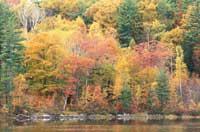Tree rings for sale history
Dendrochronology is to know the age and history of the tree by reading the rings that appear in the trunk section. It can be said that the trees with these rings have written their life and history and, step by step, only analyze them and read them as the pages of a book of history.
How are the rings created?
As is known, the three main parts of the trees in this area are the roots, trunk and branches. Dissolved sweating, mineral salts absorbed by roots and organic substances generated in plant metabolism, rises from trunk and branches to leaves. Subsequently, in the leaves, thanks to light, sweat is transformed and diffused through the plant through a conductive tissue called "Formic", protected by the cortex. Between liber and wood there is a fabric called canbium. The latter is responsible for secondary growth of roots and stems. As the activity of the Canbium stops in winter, the annual production of wood, which are the rings, is clearly observed. Each year there is a ring on the trunk.
As indicated, the canbium is located between the wood and the bark of the trunk, so in the newly cut trunk, the outer ring is the one that bears the date of this year and to know how many years has the tree just count the rings that are up to the heart.

But not all the rings that form the trunk are the same. The differences point to the climatology that occurred each year or to the conditions suffered by the tree. The annual growth of the tree is conditioned, among other things, by climatic factors and while the appropriate weather conditions are reflected with a wide ring, the finer rings are an example of the harsh conditions. Due to the influence of the climate on growth, during research it is necessary to differentiate each climatic zone.
On the other hand, each type of tree generates different rings and there are also trees that each year make two rings. Therefore, in addition to the climatic zone, prior knowledge of the type of tree is necessary.
Finally, it should be noted that nature is the one that largely imposes limitations on dendrochronology. In fact, some trees do not have growth rings, so it is impossible to conduct such research. The ringed trees are only more than 30 parallels and Amazonas and other places of interest are outside the field of research of this science.
Dendrochronological analysis
Dendrochronological research begins with external sampling and analysis of live trees. For this purpose, older trees with cleaner rings will be selected preferably. To take the sample the tree is drilled twice and the object of study is extracted from the trunk. This work will not harm the tree and in a few weeks it will be completely cured.
Next, the sample is placed on another wood and proceed to polishing and polishing. The attention given in this preparation is fundamental to the microscopic reading to be performed.

In the beginning, the first look is sufficient to draw the master lines from the later reading, but in order to concretize these initial reflections it is necessary to have the help of a special microscope that measures and analyzes the rings of the sample. Among other things, the microscope is used to accurately measure the thickness of such an important ring, but many other things will also emerge. The data is entered into the computer and the graph of the analyzed tree is formed on the screen. In this way a database with live trees is made.
From this first pattern, the data of the older living trees and those of the more recent dead must be entered into the overlap, going back in time to determine the chronological path of the rings. In fact, it can be observed that the rings of the trees that have grown in the same area and at the same time are equal, even if a remote time is studied.
The database thus constituted becomes a table that allows to compare any sample. The more data we enter and back in time, the better and more accurate the database will be. In Ireland, for example, measurements have been made until the miracle before Christ.
This tree ID can also be used to analyze the contamination of the environment, the description of where it has been planted or to anticipate the growth of a tree. This technique also allows the data of buildings and antique furniture.





